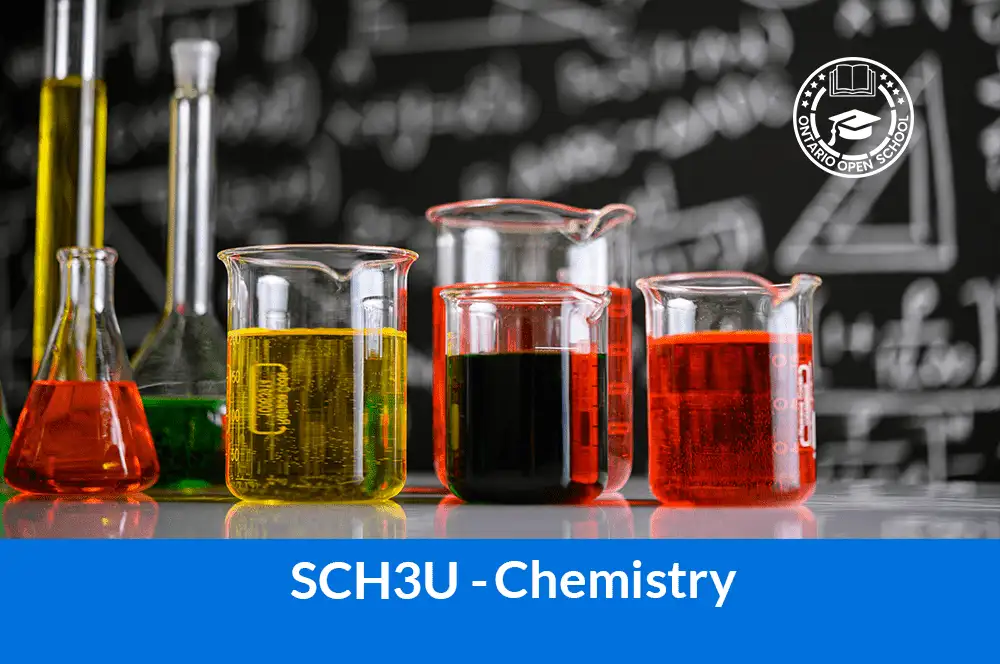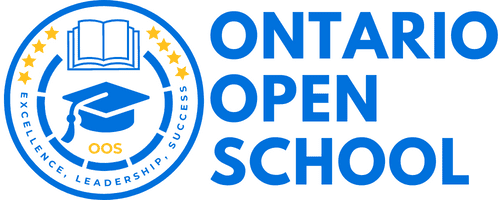- info@ontarioopenschool.com
- 647-494-4499
-
Unit 100 - 29 Gervais Drive, North York, ON.
M3C 1Y9
Copyright 2024 Ontario Open School Inc. All Rights Reserved.
This course furthers students’ understanding of the processes that occur in biological systems. Students will study theory and conduct investigations in the areas of biodiversity; evolution; genetic processes; the structure and function of animals; and the anatomy, growth, and function of plants. The course focuses on the theoretical aspects of the topics under study, and helps students refine skills related to scientific investigation.
Unit Order | Unit Name | Suggested Time |
|---|---|---|
| Unit 1 | Matter, Chemical Trends, and Chemical Bonding Students will develop an understanding of the structure of an element that allows us to predict its physical and chemical properties. They will investigate the physical and chemical properties of compounds based on the type of chemical bond formed. The appropriate use of chemicals will be | 20 hours |
| Unit 2 | Chemical Reactions Students will demonstrate an understanding that chemicals react in predictable ways and will investigate different types of chemical reactions. They will assess the significant implications of chemical reactions and their applications for society and the environment. | 18 hours |
| Unit 3 | Quantities in Chemical Reactions Students will be introduced to the mole concept and how it can be used to describe chemical reactions quantitatively. They will also apply an understanding of quantitative relationships in determining the efficiency of chemical reactions and how such reactions can be optimized. | 27 hours |
| Unit 4 | Solutions and Solubility In this unit, students will demonstrate an understanding that properties of solutions can be described qualitatively and quantitatively and can be predicted. They will assess the unique physical and chemical properties of water in supporting living organisms. Students will also analyse the origins of water pollution along with a variety of economic, social, and environmental issues related to drinking water. | 19 hours |
| Unit 5 | Gases and Atmospheric Chemistry Students will demonstrate an understanding of how the properties of gases are predictable and can be described qualitatively and quantitatively. They will evaluate the ways in which human activities and technology can have a cumulative effect on air quality. Students will also describe and evaluate Canadian initiatives to reduce air pollution, including ways to reduce their own carbon footprint. | 18 hours |
| Final Evaluation 30% | Final Project Final Exam | 6 hours 2 hours |
| Total | 110 Hours |
A wide variety of instructional strategies are used to provide learning opportunities to accommodate a variety of learning styles, interests and ability levels. These strategies include, but are not limited to:
| Activity Learning Center | Oral Presentation | Discussion |
| Peer Practice | Demonstration | Guided Exploration |
| Think Pair Share | Visualization | Worksheet |
| Lecture | Learning Log | Reflection |
| Independent Study | Computer Assisted Instruction | |
| Brainstorming | ||
| Problem Solving |
Purpose
The primary purpose of assessment is to improve student learning. Assessment relates directly to the expectations for the course.
A variety of assessments for and as learning are conducted on a regular basis to allow ample opportunities for students to improve and ultimately demonstrate their full range of learning and for the teacher to gather information to provide feedback. Assessment tasks relate to the success criteria set out in lesson plans. Success criteria allow students to see what quality looks like.
Evaluation is the process of judging the quality of student work in relation to the achievement chart categories and criteria and assigning a percentage grade to represent that quality. Evaluation is based on gathering evidence of student achievement through:
Assessment for Learning – we provide feedback and coaching. Assessment FOR Learning is the process of seeking and interpreting evidence for the use of learners and their teachers to decide where the learners are in their learning, where they need to go, and how best to go there.
Assessment as Learning – we help students monitor progress, set goals, reflect on their learning
Assessment AS Learning is the process of the explicit fostering of students’ capacity over time to be their own best assessors, but teachers need to start by presenting and modeling external, structured opportunities for students to assess themselves.
Assessment of Learning – we use assessments to provide evaluative statements about student achievement. Assessment OF Learning is the assessment that becomes public and results in statements of symbols
(marks/grades/levels of achievement) about how well students are learning. It often contributes to pivotal decisions that will affect students’ future.
ASSESSMENT TOOLS
Strategies for Assessment and Evaluation for Student Performance
| Units | Duration | Overall Expectations | AFL | AAL | AOL |
K 25% |
A
25% |
C
25% |
T 25% |
||
| A | Integrated throughout the course | A1-A2 | Student – Teacher Conferencing | Peer Review | Poster Presentation | √ | √ | √ | √ | ||
|
70% |
B | 22 hours | B1-B3 | Exit Ticket
Class Discussion |
KWL Chart | Unit Test
Class Discussion |
√ | √ | √ | √ | |
| C | 19 hours | C1-C3 | Worksheet
Pair Discussion |
Learning Log |
Unit Test Written Assignment |
√ | √ | √ | √ | ||
| D | 30 hours | D1-D3 | Home Work
Student – Teacher Conferencing |
Reflective Discussion |
Unit Test Portfolio Assignment |
√ | √ | √ | √ | ||
| E | 19 hours | E1-E3 | Oral Presentation
Diagnostic Quiz |
Student- Teacher Conferencing | Unit Test
Individual Presentation |
√ | √ | √ | √ | ||
| F | 20 hours | F1-F3 | Q/A Session | Peer Assessment | Unit Test
Collaborative Collage Assignment |
√ | √ | √ | √ | ||
| 30% | A1-F3 | Final Project 10% (Individual Presentation)
and Final Exam 20% (Written Component) |
√ |
√ |
√ |
√
|
|||||
Resources
http://www.edu.gov.on.ca/eng/policyfunding/growSuccess.pdf
Grading
Weighting of categories
| Knowledge/Understanding | Thinking/Inquiry | Communication | Application |
| 25% | 25% | 25% | 25% |

Course Grade | Grade 11 |
|---|---|
Course Code | SCH3U |
Course Category | Science |
Course Type | University Preparation |
Course Delivery | Online |
Course Duration | 110h |
Course Credit | 1.00 |
Copyright 2024 Ontario Open School Inc. All Rights Reserved.
